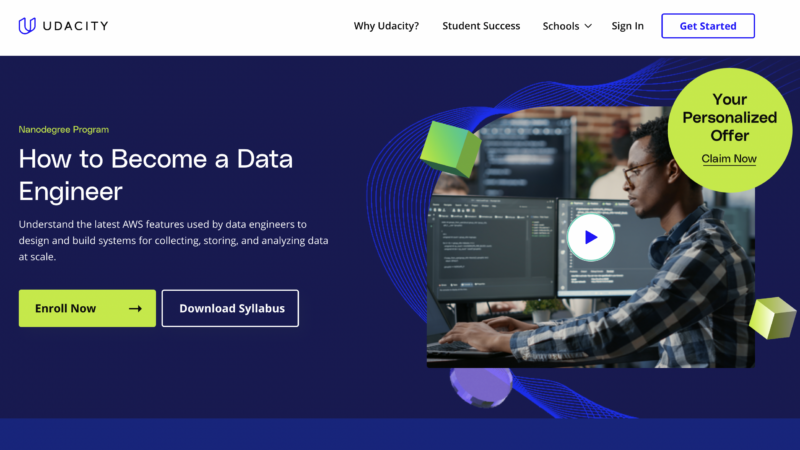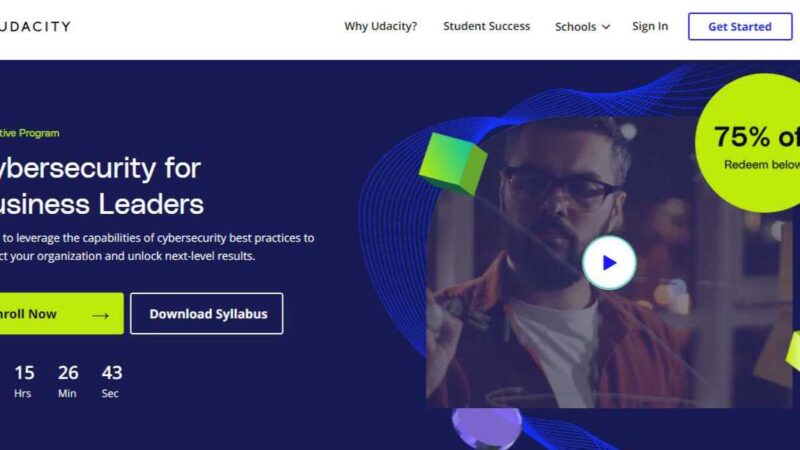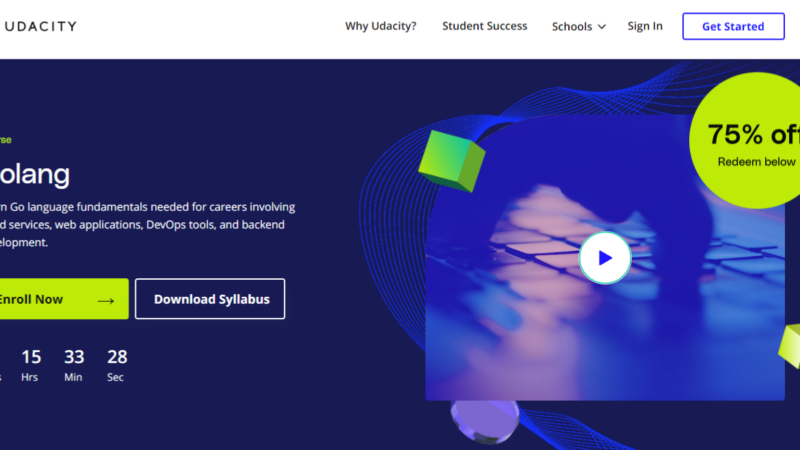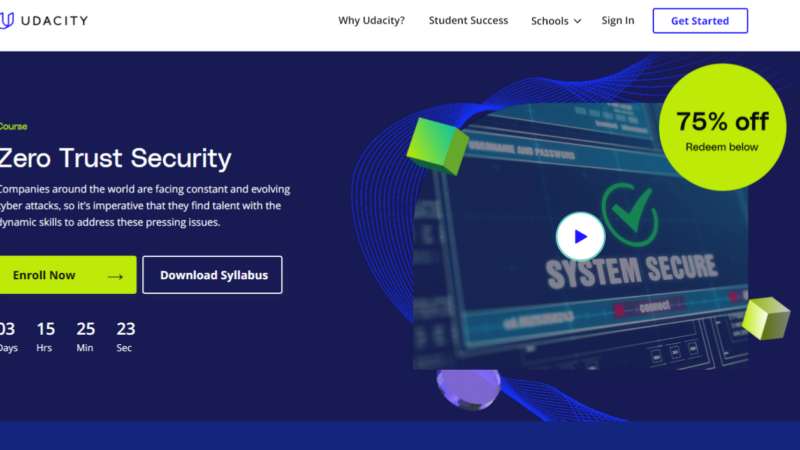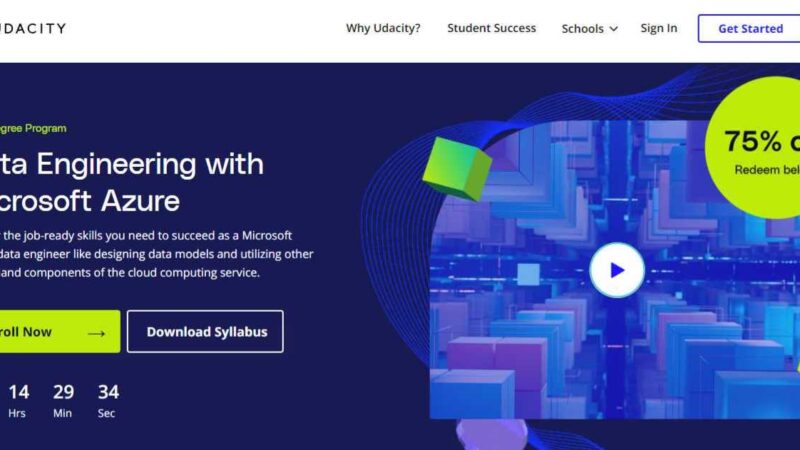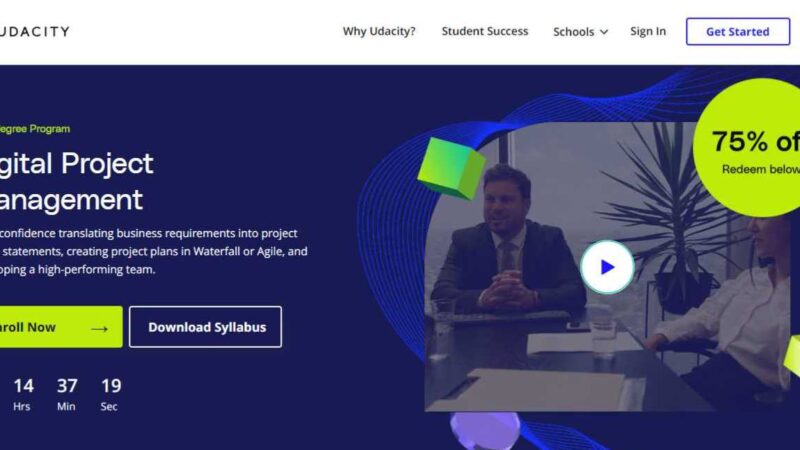Udacity Java Developer Nanodegree Review

Java is one of the most popular programming languages around the world. Fluency with its commands comes with innovative powers that allow you to think outside the box and create tomorrow’s solutions for a wide range of businesses as they make their digital transformations. Not to mention you’ll start to build a strong foundation that can open doors to other more advanced and specified languages to add advanced abilities to your credentials. If you’re interested in a career involving Java, you can opt for an online certification, one of which is Udacity. If you haven’t heard of this online academy, we’ll start with an introduction followed by an in-depth look at the course and job market in this review. After reading this, you should have all you need to decide if this is the course for you.
Udacity Accreditation and Nanodegree
Udacity was started from a program born out of Stanford university which offered free computer science classes. A few professors saw the potential and decided to roll with it, creating Udacity to offer massive open online courses (MOOCs) to anyone with the desire to learn. From humble beginnings, the academy would make a huge splash,partnering with giants across the IT field. Now, they offer both introductory courses and courses that come with a certification known as a nanodegree.
What is a nanodegree?
A nanodegree is defined as an online certification that can be completed in less than a year. The aim is to teach foundational programming skills that can earn graduates’ entry-level positions. Udacity offers these certificate courses with extras in an attempt to set them apart from the competition. The extras included in every nanodegree program are:
- Real Industry Projects
Each nanodegree comes with projects made in collaboration with the companies which have helped in the creation. The academy attempts to give learners the same types of projects that they will be working with from day one, preparing them for immediate work in the fast-paced world of IT.
- A Mentor
Also included in each degree is your very own mentor. They are not only there for technical support if something goes wrong but are also a support system to help you juggle the workload. Apart from your professors, you’ll have your mentors to answer questions day or night.
- Career Coaching
Included in this feature is help preparing the perfect resume, a spot in the Udacity database where companies are known to recruit and a mock interview. Experts are there to provide any kind of feedback and support to get you ready for your first interview.
- Flexibility
Perhaps the best feature of the bunch is the ability to learn flexibly. This not only means from anywhere but also anytime, with the ability to login when you like. You will have as much time as you need to complete the course though a few of your projects may come with deadlines.
What Do I Need to Start the Course?
So, let’s get to this course specifically. The Java Developer Nanodegreeis considered to be an intermediate course which means that there are some recommendations as to prior knowledge before beginning the course. Though this not required, it is highly suggested so that you can keep up with the course load and not have to take time to continually brush up on knowledge that is expected beforehand. This knowledge includes, experience with any object-oriented language for example C++ or Python. On top of that, the site comments that experience with development at any level is a plus. If you don’t quite have these things down and would like to brush up before beginning the nanodegree, you can find tons of free courses.
Meet your Instructors
Before we start to breakdown the course, let’s take a look at who’s going to be leading your lectures. Usually, Udacity has a superstar group of instructors with years of industry experience under their belt. This speaks volumes, meaning that your instructors will have a wider knowledge base able to comment on both the topic and how it will apply to your time in the field. The instructors of this course are:
Stephen Chen
Stephen has years of experiencing as a full stack developer. He’s worked with many of the top and most recognized companies taking his knowledge and combining it with his passion for teaching to lead a few lectures during this course.
Kesha Williams
An expert problem solver, Kesha has worked in the field for more than 20 years leading projects that have helped businesses create advanced solutions to difficult industry problems. She has management experience and was recently named Alexa Champion by industry giant, Amazon.
Aravindan Ramkumar
Software engineer and Java developer are just two of his titles. Currently, he’s putting his skills to work with Netflix, helping them with the next big infrastructure that is sure to change the way they do business. His expertise liesin optimizing practices employed by businesses to create smoother data transitions across the board.
Sareeta Panda
Sareeta is an expert in application development for huge enterprises. She has worked with giants like Walmart all the way down to small startups helping them to advance into the digital age and evolve the way they do business.
Udacity Java Nanodegree Course Breakdown
Now, on to the course. It is separated into four sections, each of which is broken down into bite sized pieces that build onto one another. At the end of each section, you’re asked to complete a project that allows you to put all your new skills to work. Let’s look at the sections and what you’ll be learning in each one.
Basics
You’ll be using a few different integrations and plugins which you’ll learn about here. You’ll receive a crash course on Java plus get a solid introduction to the Spring Boot framework, which you will use almost every step of the way throughout development. The course will end with practice building an application built with Spring Boot that mimics a chat room.
Web Services and APIs
Here, you’ll start to learn how to distinguish the differences between web services, APIs, and microservices. Plus, you’ll learn how to develop and test different types of APIs including REST and GraphQL. The project you’ll have waiting for you will have you develop at the back-end, creating a system for a website that is dedicated to cars.
Data Storage
Persistence is taught here along with different methods of storage when it comes to data. Using the language, you will see how to build, test, read and write for MySQL and other platforms. You’ll also get a look into the differences between databases both relational and non-relational.
Security and DevOps
Perhaps the most important piece of the puzzle for development nowadays is security. You’ll start by looking into different methods for authorization and authentication followed by a look at version control and GIT. You will also build a pipeline in this section, something that is very useful in the field. This section, and the course, will end with an attempt to authorize an e-commerce application. This requires you to pull all the knowledge together and gives you some freedom to innovate as well.
How Long Does this Course Take?
As one of the extras, you can take as much time as you want, that is with the due dates for some projects in mind. As an estimate however, Udacity claims that the course should take around 4 months if you dedicate only 5-10 hours a week. This is a good way to keep on track, looking at how the course will incorporate into your schedule to allow you the most flexibility possible. Also keep in mind that Udacity has a unique payment system where the time you take affects the total price of the course. More on that in the section below.
What’s the Cost?
Udacity has a different way of charging for the course which depends on the amount of time you take. This is because the charge is calculated by monthly access, where you can choose to pay as you go or, take a discount if you choose to pay up front. The cost per month at the moment is $399 per month which is the pay as you go price. As mentioned above, if you choose to pay for everything together using the estimated time as a discounted rate, you can get the four months access for around $320 a month. This means that, at minimum, the course will course a little under $1300 if you finish within 4 months.
What have Learners Said?
Not every experience is the same during and after the course. For this reason, we like to take a look around the web searching for what those who have taken the course have to say. While we could not find any reviews up on the site, we took a look on popular rating and opinion sites like reddit and switchup.org. What we found was an overall positive experience though there were a few negative reviews that caught our attention. In both, the writer felt that the course did not prepare them efficiently and wasn’t worth the large cost. We could only find two of this type, with the rest focused around projects and extras that come with the course.
You do have the option to login and read specifically what others have to say, using their comments as a way to help you along with your decision or give you insight into how to successfully complete the course. You can do this or look at what the course includes and go with it if you feel it will get you to the position you desire.
How’s the Job Market?
Due to the fact that Java happens to be the most in-demand language out there, the job market is full of opportunity. At an entry-level position, you can expect to make anywhere from $70,000 to $75,000 per year. As your experience grows and the demand for developers with foundations in Java grows, this increases to large amounts up into the six figures.
A recent analysis by Collabera stated that there was an 80% increase in the total amount of job postings related to Java development and experience from 2017 to 2018. As for this year and the years to come, an analysis by Dice concluded that Java was on the list of one of the hottest skills in demand making it as high up as number 2 on some lists. This makes sense for the strong foundation that Java provides which allows those with the knowledge to build up learning other languages more easily. Plus, more and more businesses are opting for enhanced user experiences, which starts at the very backbone with the language and structures learned in this Java course.
Final Thoughts
If you’re looking to start a career that will allow you to work in the exciting world of IT, Java is a language worth learning. As you have probably discovered, a basis with this language comes with a world of opportunities whether it is working on front end, back end or entire infrastructures. Now is a great time to start, as the demand is only expected to increase in the years to come. A great place to start learning these skills is with an online course that focuses on real industry problems, a feature that Udacity prides themselves on.
The certificate courses focus on learning the material needed to jump into the field, putting emphasis on hands-on projects that require learners to use the knowledge gained throughout each of the sections during the course. Not to mention the fact that all the extras are focused on pushing graduates into the workforce through expert help with resumes, interviews and access to the Udacity career database.
If you are ready for or thinking about a career change and considering the Udacity Java Developer Nanodegree as a starting point to get you there, we totally agree. For us, this is a great option from a renowned academy that partners with industry giants that helps launch graduates into their first career; could there be anything better?
